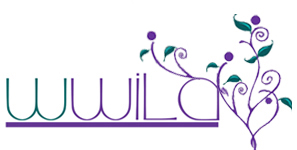Research Articles:
Australian Institute of Health & Welfare, (2018) Family, domestic and sexual violence in Australia, 2018. Released 28 February 2018. Commonwealth of Australia. Download report – Family, domestic and sexual violence in Australia, 2018
Australia’s National Research Organisation for Women’s Safety. (2020). Violence prevention and early intervention for mothers and children with disability: Building promising practice: Key findings and future directions (Research to policy and practice, 16/2020). Sydney: ANROWS. Download report
Beckwith, S., Lowe, L., Wall, L., Stevens, E., Carson, R., Kaspiew, R., MacDonald, J.B., McEwen, J. and Willoughby, M. (2023) Coercive control literature review: final report; Melbourne: Child Family Community Australia, Australian Institute of Family Studies. To access report click on: AIFS Paper: Coercive control literature review (apo.org.au)
Bell, C., & Coates, D. (2022). The effectiveness of interventions for perpetrators of domestic and family violence: An overview of findings from reviews (WW.22.02/1). ANROWS. Link: https://apo.org.au/sites/default/files/resource-files/2022-02/apo-nid316299.pdf
Chenoweth. L. (1993) Invisible Acts: Violence Against Women with Disabilities, Women with Disabilities Australia.
Dixon, J & Robb, M. (2015) Working with Women with a Learning Disability Experiencing Domestic Abuse: How Social Workers Can Negotiate Competing Definitions of Risk inBritish Journal of Social Work; January. Link to article
Dowse, Leanne; Soldatic, Karen; Spangaro, Jo; van Toorn, Georgia (2016) Mind the gap: The extent of violence against women with disabilities in Australia in Australian Journal of Social Issues, Volume 51 Issue 3
Douglas & Harpur (2016) Intellectual disabilities, domestic violence and legal engagement, in Disability & Society, 31:3, 305-321, Link: 10.1080/09687599.2016.1167673
Frohmader 2010, ‘Submission to the Australian Government Consultation Paper: Family Violence – Improving Legal Frameworks’, Women With Disabilities Australia.
Hughes RB, Lund EM, Gabrielli J, Powers LE, Curry MA. (2011) Prevalence of interpersonal violence against community-living adults with disabilities: a literature review. in Rehabil Psychol. Nov;56(4):302-19.
Laing. L. (2010) No way to live. Women’s experiences of negotiating the family law system in the context of domestic violence. University of Sydney. Link: http://ses.library.usyd.edu.au/bitstream/2123/6255/1/No%20way%20to%20live%20final%20report.pdf.
McCarthy, M., Hunt, S., & Milne-Skillman, K (2017) ‘I Know it was Every Week, but I Can’t be Sure if it was Every Day: Domestic Violence and Women with Learning Disabilities in Journal Applied Research in Intellect Disability. Mar; 30(2): 269–282. Published online 2016 Jan 14. Link: 10.1111/jar.12237
O’Leary. T; Pratt. R; Mitchell. C. 2006, “Respect, Protect, Connect: Boyswork in the New Millennium” South Eastern Centre Against Sexual Assault, Victoria. Link: http://www.livingwell.org.au/wp-content/uploads/2012/11/Respect_Protect_Connect_manual.pdf
Pestka, K. & Wendt, S. (2014) Belonging: women living with intellectual disabilities and experiences of domestic violence, Disability & Society, 29:7, 1031-1045, Link: 10.1080/09687599.2014.902358
Platt, L., Powers, L. & Leotti, S. (2015) The Role of Gender in Violence Experienced by Adults With Developmental Disabilities; in Journal of Interpersonal Violence; Vol. 32; Issue 1: 101-129. Link: https://journals.sagepub.com/doi/10.1177/0886260515585534
Queensland Government (2022) Queensland Government response to the Report of the Womens Justice and Safety Taskforce: Hear Her Voice – Report One – Addressing Coercive Control and Domestic and Family Violence in Queensland. Brisbane. To access Click Here
Queensland Government (2022) Queensland Government response to the Report of the Womens Justice and Safety Taskforce: Hear her voice – Report Two – Women and girls’ experiences across the criminal justice system. Brisbane. To access Click Here
Salthouse. S., Frohmader, C. (2007-9) A Framework for Influencing Change. Responding to Violence against Women with Disabilities. The Victorian Women with Disabilities Network Advocacy Information Service (VWDNAIS). 29 pgs, Link: http://www.wdv.org.au/documents/influencing_change_final_version.pdf
Smith, DL 2007, ‘Disability, Gender and Intimate Partner Violence: Relationships from the Behavioral Risk Factor Surveillance System’, Sexuality and Disability, 26, pp. 15-28.
Stevens, B. (2012) Examining Emerging Strategies to Prevent Sexual Violence: Tailoring to the Needs of Women With Intellectual and Developmental Disabilities inJournal of Mental Health Research in Intellectual Disabilities; Vol.5 – Issue 2: Maltreatment of Individuals With Intellectual Disabilities – Part II; p.168-186; Link: https://doi.org/10.1080/19315864.2011.608153
Resources:
Domestic and Family Violence information and Support for Women with Disability
This Queensland government website will help you learn about domestic and family violence and the steps you can take if you think it’s happening to you. For further information click on this LINK
eSafety Commission – Online Technology Facilitated Abuse
eSafety delivers a free learning and development program to upskill frontline workers who support people experiencing technology-facilitated abuse. Click HERE for more information.
MacDonald, J. B, Truong, M., Willoughby, M., & March, E. (2023). Technology-facilitated coercive control (Practice Guide). Melbourne: Child Family Community Australia, Australian Institute of Family Studies. To access guide click on: Technology-facilitated coercive control | Australian Institute of Family Studies (aifs.gov.au)
North Side Connect Inc. Podcast (2022) ‘The Injustice of Intimacy’
Based in north Brisbane, they provide services such as legal advice, domestic violence support, practical relief from life stressors as well as a safe place to connect and reinforce the sense of community.
Series 1: Intimate Partner Sexual Violence (IPSV)-
Series 2: Coercive Control
In this podcast women share their stories about recognising and getting help for Intimate Partner Sexual Violence (IPSV) and Coercive Control. Be aware that they are speaking about sexual violence and domestic violence, so if you plan to use these podcasts with clients they may be triggering for them and cause distress. It is best to listen to them first before recommending them to others. To listen please go to: The Injustice of Intimacy (buzzsprout.com)
This handbook has been created in collaboration with the New South Wales–based national disabled people’s organisation People with Disability Australia (PWDA) and the Queensland–based WWILD Sexual Violence Prevention Association. The handbook is targeted at the New South Wales (NSW) sexual, domestic and family violence (SDFV) sector and aim to develop people’s skills and knowledge on how to support people with intellectual or learning disability who have experienced domestic and family violence (DFV). PWDA and WWILD’s handbook has been developed in response to requests from the NSW Women’s Alliance and the DFV sector for support and information on this topic. This handbook will be useful for all DFVSA workers.

